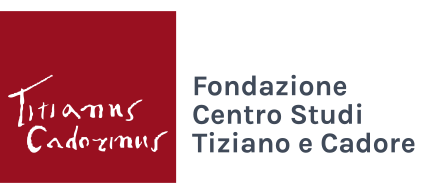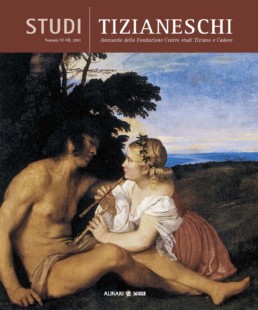Studi Tizianeschi VI – VII
Price: 25.00 €
On line price: 23.00 €
Free delivery in Italy, payment on delivery abroad
After an almost two-year interval, Studi Tizianeschi re-appeared with a double volume VI-VII, which offers a vast and varied choice of papers, reflections and comments Titian and his surroundings (“Tiziano e dintorni”), written by scholars of different ages, nationalities and methodological backgrounds.
The first essay by Heiner Borggrefe, an expert of the artistic cultural of Renaissance Europe and the relationship between Germany and Venice, provides an iconological reading of Titian’s Three Ages of Man (National Galleries of Scotland, Edinburgh). Three interconnected contributions on Francesco Vecellio, Titian’s (elder or younger?) brother follow. The complete list of documents on Francesco is of fundamental importance and is the highlight of this volume.
Paul Joannides, a respected Titian specialist and esteemed contributor to our periodical, retraces the intricate sequence of events connected with the Louvre’s so-called Venere del Pardo, hypothesizing a new date. Giorgio Fossaluzza concentrates on two paintings by Andrea Schiavone that are variations of Titian’s great Ecce Homo d’Anna, now in Vienna, discussing their artistic context and origins.
The young English scholar Simon Oaks provides a brief, but very well-informed, note in which he re-examines Harold Wethey’s catalogue raisonné of Titian’s religious works, collecting and updating the information on Salome in the Galleria Doria Pamphilj in Rome by listing its numerous copies, variations and derivations. A noteworthy paper on Damiano Mazza, one of Titian’s collaborators, and an undiscovered ceiling mentioned in the sources is provided by Giorgio Fossaluzza. The last two contributions, on the other hand, fall within a relatively neglected field of study, that of Titian’s “mythisation” in the 19th century. Ranieri Varese presents a new sketch by Antonio Canova for Titian’s Entombment in the Venetian church of i Frari while Cristina Beltrami focuses on the monument to the Titian in the main square in Pieve, well known to all our Cadore supporters. A substantial series of reviews – as always, critical reflections rather than mere indications – of recently published books on Titian or related themes follows in the second part, which ends with the customary review of the most interesting – or controversial – papers written in the last two years, by Michele Di Monte. Lastly, Beverly Louise Brown, an American scholar, reflects on the two versions – Boston and Paris – of the exhibition Venetian Rivals: Titian, Tintoretto and Veronese. At the end of the volume, she also reviews the exhibition on Renaissance portraiture held – in two different versions – in Madrid and London in 2008-2009.

